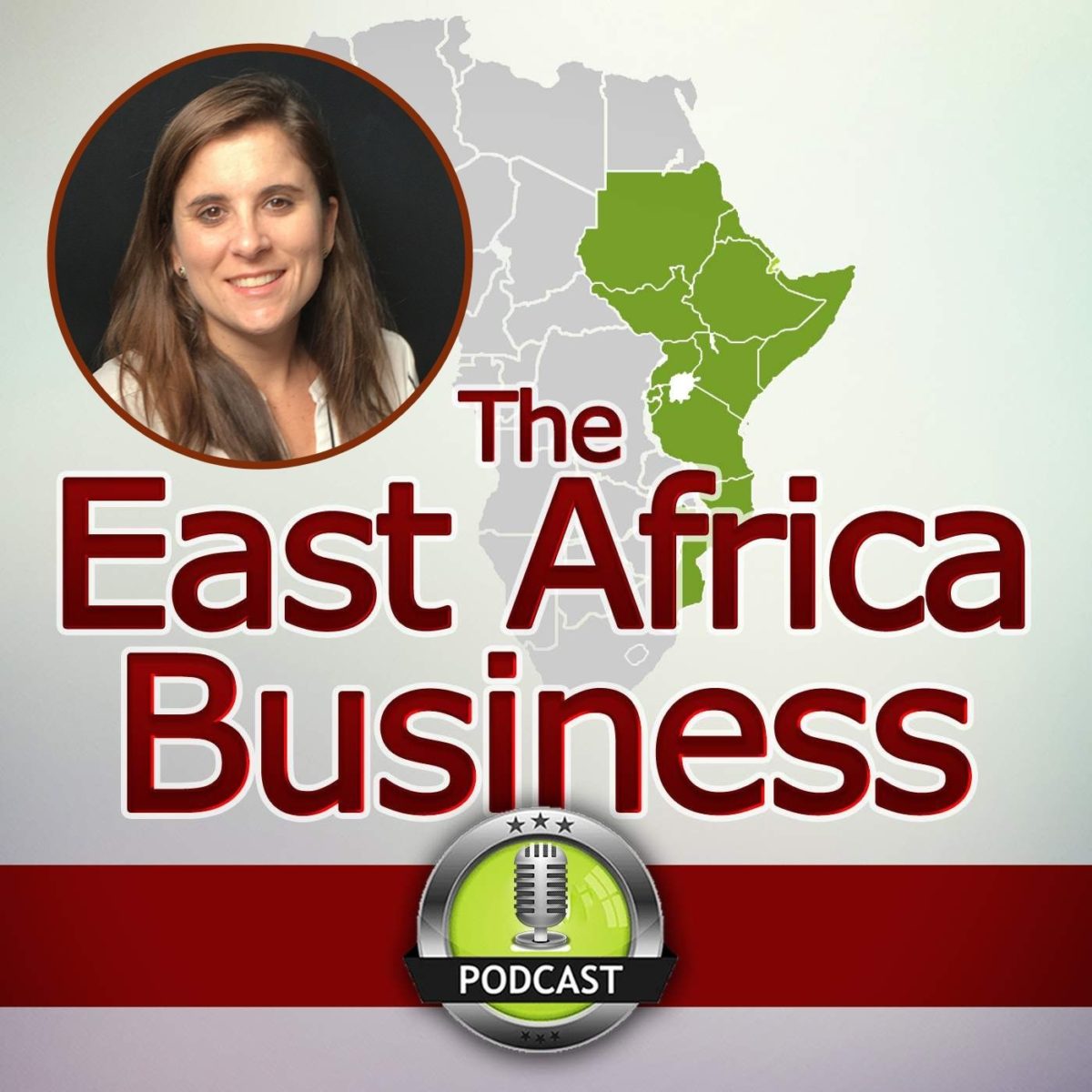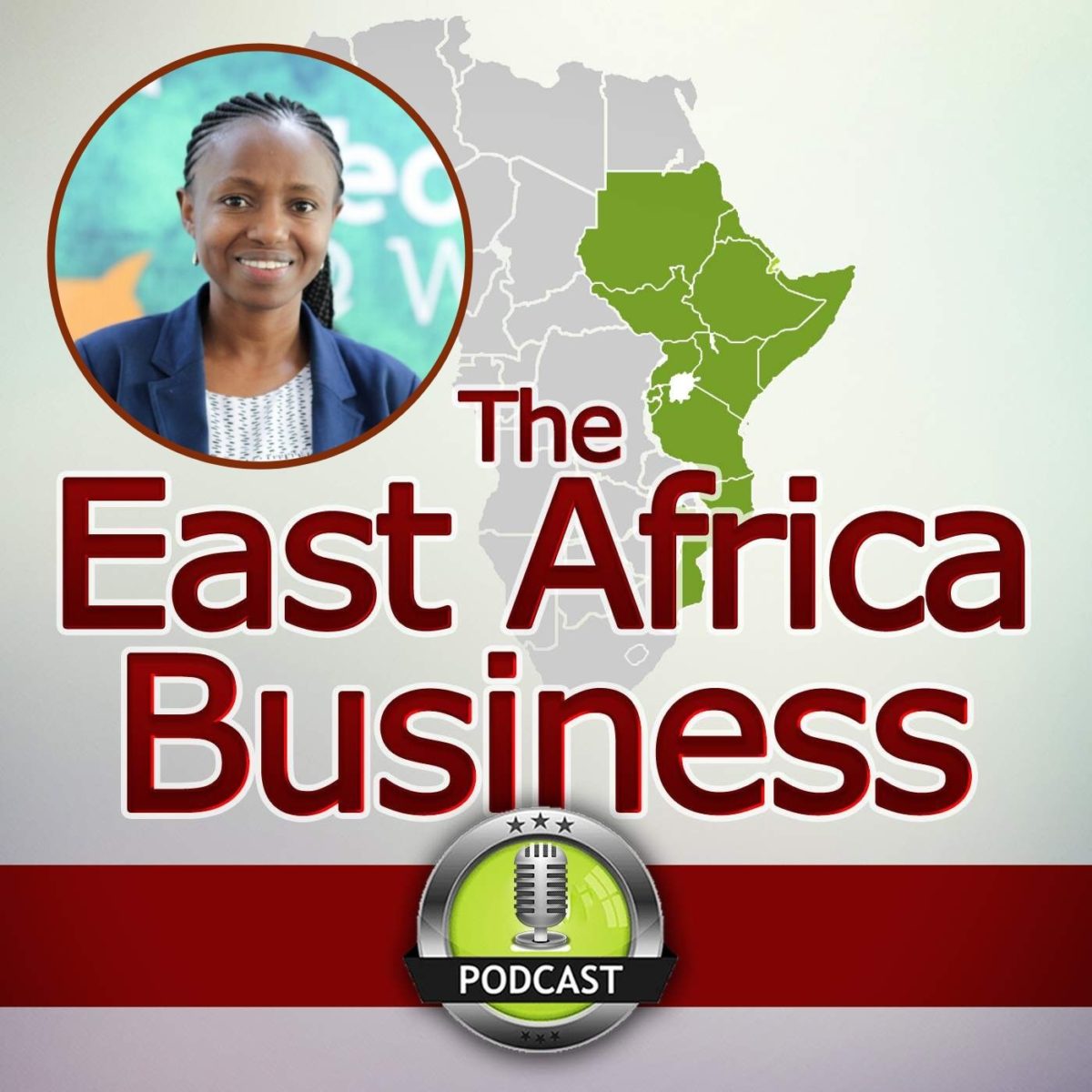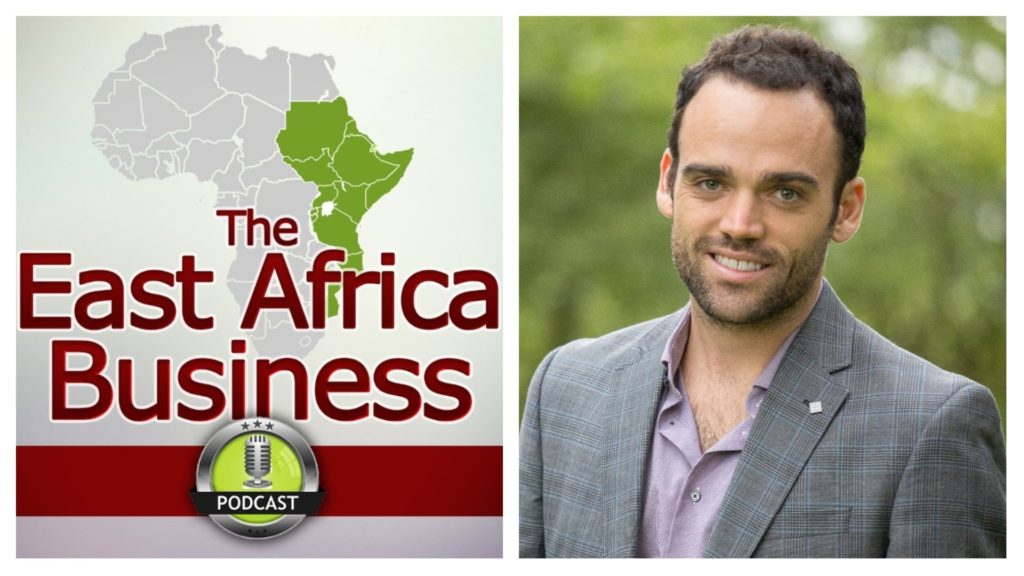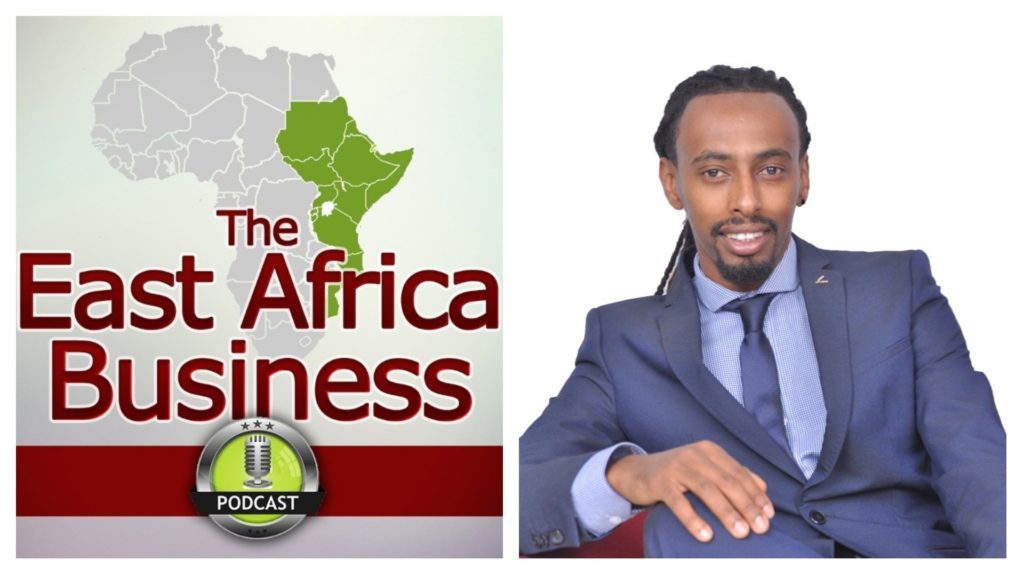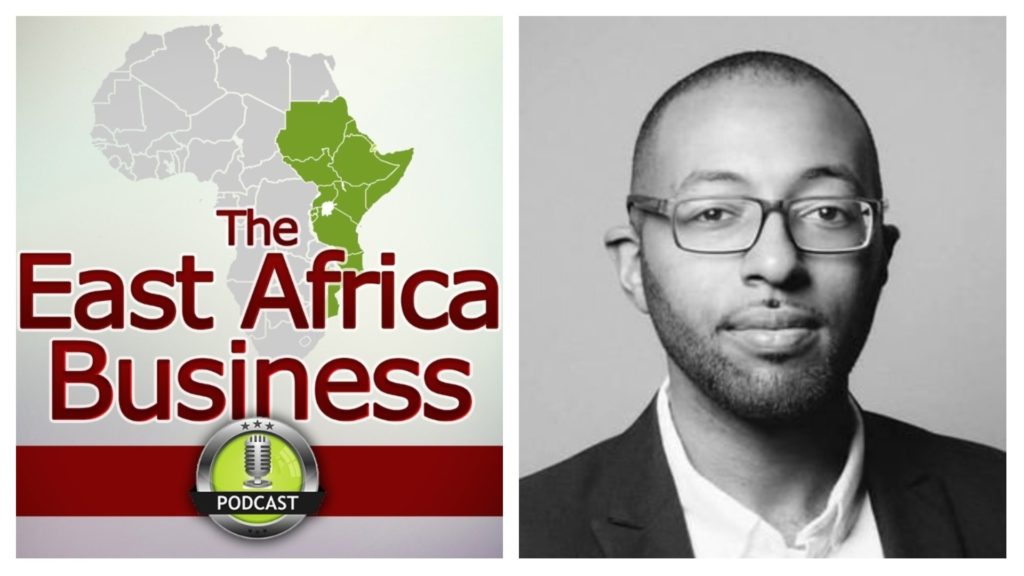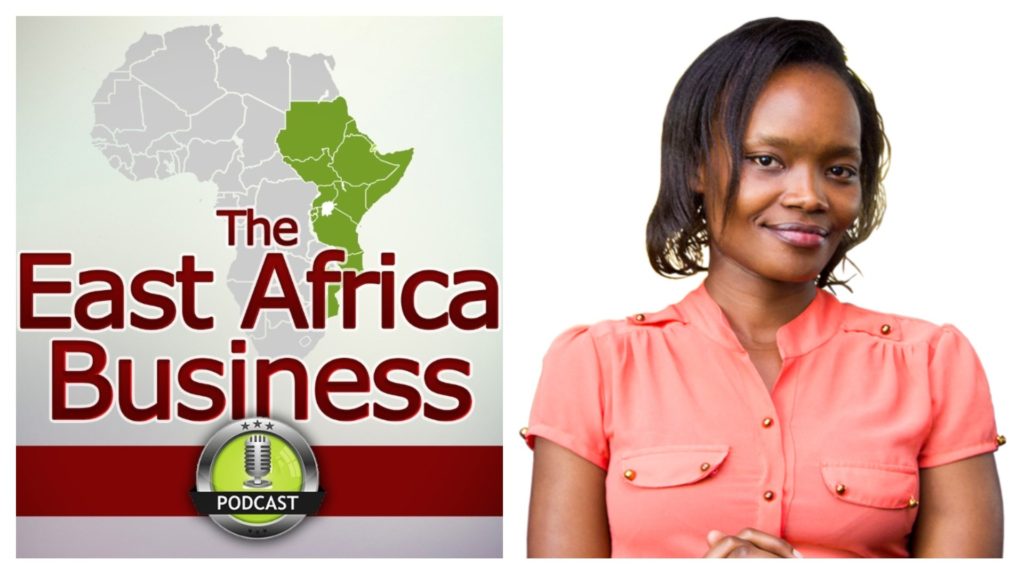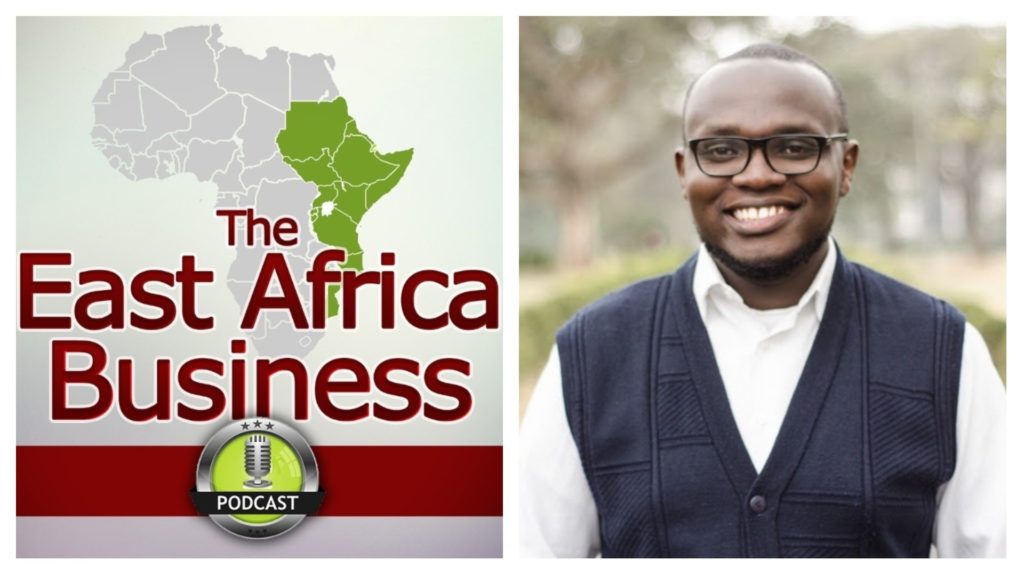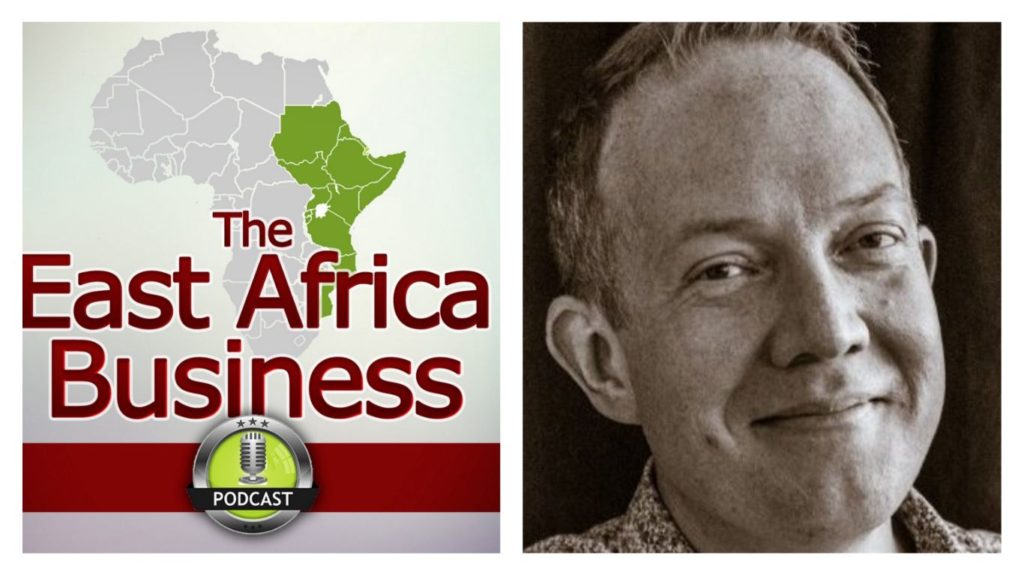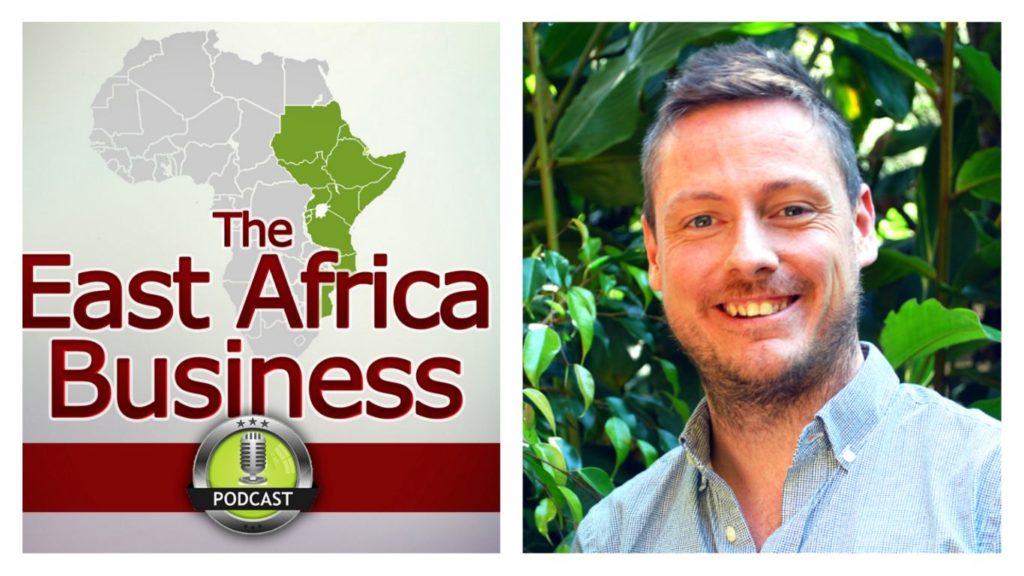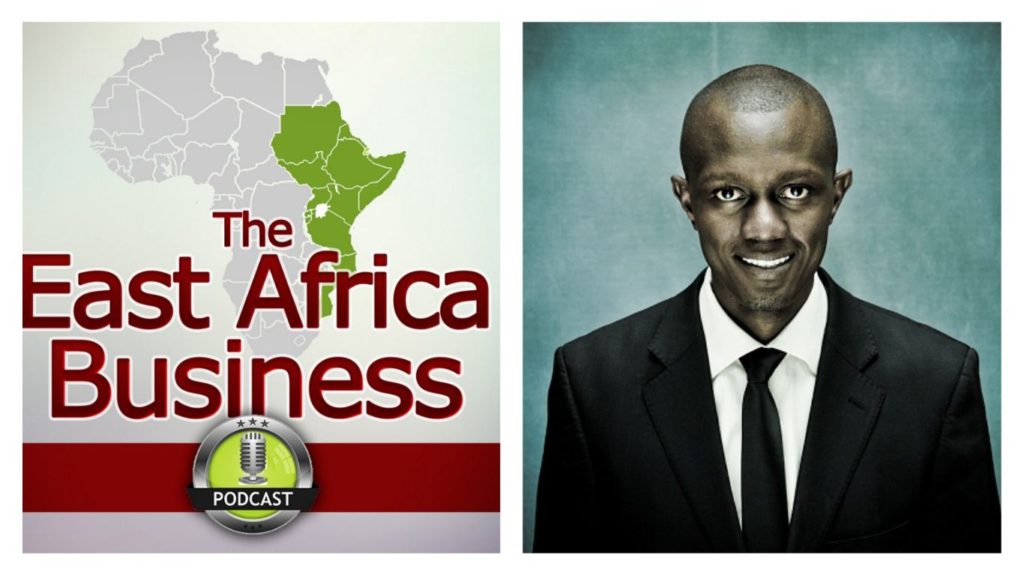Overview
In this catch-up episode, I chat with Caitlin who runs Flare.
Caitlin and I first spoke in late 2016, and you can listen to the original interview by scrolling down to the episode named Ambulances.
The premise then was that Flare would become a technology platform to connect people with ambulances much in the way that Uber has developed the model of hailing a driver through their app.
Whilst the vision of providing world-class emergency dispatch services remains unchanged, the company has developed more of a human touch.
As Caitlin and I discuss, a core offering they now have is a 24/7 dispatch hotline where trained medical professionals consult with callers before dispatching them to the appropriate provider.
We also talk about other things that have come from running the business over the past three years.
How they’ve been cautious to not scale too quickly, how large corporates are signing up to the Rescue.co service, and their considerations for international expansion.
The interview takes place in the garden of the Flare house (you may notice a number of companies such as Lynk and SunCulture operate from residential homes) and so there may be some background noise, not least from Koko – the office dog who comes over halfway through.
Sign up below to hear whenever there are new stories and episodes released on the podcast
Social Media Links
Website: http://flare.co.ke/
Facebook: fb.com/RescueByFlare
Twitter: @RescueByFlare
LinkedIn: https://www.linkedin.com/company/flare-emergency-response/
Transcript
Sam: 00:07 Intro.
Sam: 02:37 Cool. So we’re here today with Caitlin from Flare again. Caitlin, welcome to the show.
Caitlin: 02:42 Thank you so much.
Sam: 02:43 So we first chatted nearly three years ago, would you believe it, and we went through bit of an overview of what Flare was doing, what you were sort of getting set up to do. But yeah, just for people who perhaps haven’t listened, could you just give us a bit of an overview as to what Flare is and what your doing at the moment?
Caitlin: 02:59 Absolutely. So at Flare we are building next generation emergency response systems. So what that actually means is that we’re building 911 for the 60% of the world that currently does not have an existing system.
Sam: 03:13 Very succinct. And that was pretty much, that vision has not changed?
Caitlin: 03:17 That vision has not changed. Definitely, the way that we’ve gone about it has changed. And how, you know, we operate. But as it relates to what we focus on, the vision has been the same since beginning.
Sam: 03:30 Fantastic. And it started off sort of version one, I seem to remember was talking about was there’s a real problem with ambulances, like calling an ambulance in Nairobi in particular and that you’ve got I think it was 43 private ambulance companies. And then if you need to call an ambulance you’d need to go through in theory all 43, and it could be that there’s one around the corner but you don’t give them a call and you are basically looking to aggregate them all together, so that you can call, I think the dream was that you could call one number and then the one that was closest would be dispatched to you. How did that go in building that out, is that basically been built out?
Caitlin: 04:09 Yeah. So from three years ago to today, we’ve actually made that a reality and have today responded to thousands of calls and dispatched thousands of ambulances to patients in Nairobi and also across Kenya. Our fastest response time is four minutes, which was amazing. And it was the exact same scenario that I described where someone calls us distressed and we knew that there was an ambulance around the corner, based on our technology and were able to dispatch. The part that’s changed is that we actually today operate the 24 seven dispatch center. So when someone has an emergency, they do call one single number, that single number routes to our dispatch center. It’s picked up by a paramedic or nurse who triages the call, provides care over the phone and uses our technology to dispatch. So I think the change is that we realized the value of a human in emergency response and that there is absolutely and was opportunity to digitize a lot of it, but there’s still is that value of having a voice at the other end of the call to calm you in some of the worst moments of your life.
Sam: 05:14 Got it. Because the initial awareness was that it was, you know, Uber for ambulances and you’d kind of press a button and, you know, so and so is on his way. So you’ve sort of tweaked the products in such a way that there’s now, when, when you say they call a number, do they call Flare?
Caitlin: 05:33 Yeah, so they call us, our consumer product is called rescue and so they call rescue. So we have a number that is…
Sam: 05:41 Is it like a 07…
Caitlin: 05:43 Yeah, incredibly easy to remember.
Sam: 05:45 What is it?
Caitlin: 05:45 So you are provided it once you sign up as a member.
Sam: 05:47 Okay, very good, so I’ll sign up first.
Caitlin: 05:49 So you should sign up at rescue.co and then you’ll be given the number, but you make that single call. And what we realized again, in the moment of emergency, you don’t necessarily need to download an app or press a button is you just want to call instantly that one number and hear someone at the other end of the line reassure you that you’re going to be okay. That other individual at the other end of the line needs to be enabled by technology such that they can quickly make the right choice. And that’s where our technology is built in, is that it’s on the back end. And it allows our dispatchers to, you know, quickly find the right resource and get that ambulance moving towards you.
Sam: 06:26 Got it. Okay. So when somebody signs up to rescue, they save the number in their phone?
Caitlin: 06:33 Yep. It’s as simple as that.
Sam: 06:35 Alright, very good. And then the dispatch team, so these are employed by Flare or employed by rescue. So you’ve got like a team and it’s 24/7?
Caitlin: 06:44 Absolutely. So we have a team that works 24/7, 365 and is there to pick up your phone and phone call in seconds. And they’re all medically trained and so that they can provide directions over the phone. So if you’re having a heart attack, they can give the caller the step-by-step directions in layman terms such that you can actually provide that care over the phone while they’re also dispatching the ambulance.
Sam: 07:07 Really? So 4 a.m. On a Wednesday morning, you’ve got a trained paramedic on an end of the phone?
Caitlin: 07:12 Absolutely.
Sam: 07:13 Is that quite expensive? To like, I’m thinking, if I’m a trained paramedic, would I want to be at work at 4:00 AM on Wednesdays? Do you have to pay them quite a lot?
Caitlin: 07:21 I mean, we make sure they’re taken care of, but I don’t, I think one of the things is medical professionals here are a little bit more affordable, but at the same time, like we saw the actual value of having someone trained at the other end of the call. Also, because the system here is so fragmented and chaotic, there are more medical decisions to make. In the US or the UK, it’s pretty straight forward. You call 911, they dispatch an ambulance and they know exactly what hospital you’re going to because it’s based on your location. Here, there’s a lot more that needs to be decided, so they need to decide at 4:00 AM on that Wednesday, if you have a heart attack, where do you go? And you don’t know that there’s only one 24/7 facility that has a cardiologist, our dispatchers do. And they can make those decisions using our technology, which helps guide them, you know, to make the best decision. But otherwise, you know, if you just have a nonclinical person, we believe that you wouldn’t have as meaningful of a service.
Sam: 08:18 Makes sense. So is there like a big sort of database of hospitals? If I click this button, click, click, click, click, click, cool, here’s your list of three.
Caitlin: 08:26 Exactly. So it’s based on proximity and then what we say appropriate. So appropriate means does the hospital actually have the service that you need or we suspect you need to provide you that care. So some of it is pretty straight forward. Like if you think about it’s a woman who goes into emergency labor or has obstructed birth, does that facility have the ability to do emergency C section or you’ve broken your ankle, does that facility have an x ray machine so they can actually see whether or not you know, you have a fracture. So it’s some really basic stuff, but all of that is in our system such that our dispatchers are enabled by that technology.
Sam: 09:04 Yeah. I can’t remember if we spoke about this on the podcast or at another time, but you basically had to go out and build that database of categorizations of everything. That doesn’t exist.
Caitlin: 09:14 Exactly.
Sam: 09:14 That sounds like a massive headache if you’re, not headache, but that’s quite job to get around to.
Caitlin: 09:22 It was quite a job, but I would say now because we have a lot of throughput, meaning we have a lot of calls, we’re validating that information every single call, in the sense that if today Nairobi hospital has a functioning CT scan, but tomorrow when we call them for a dispatch, they don’t have a CT scan that will be turned off in our system. So we’re constantly revalidating that information. So once you’ve built out the system, we were able to kind of quickly adapt and kind of adjust. But it is an unbelievably like powerful set of data that no average individual will ever know or understand.
Sam: 09:53 Are you utilizing it just for Flare? Or could you, I don’t know, sell access to that database to another organization?
Caitlin: 10:01 Maybe if the price tags is big enough.
Sam: 10:03 Yeah. Alright. I was thinking like it’s quite a lot of work that you’ve done. And I’m just wondering if there are other ways, if you’re sitting on it, like are there other companies like, I’d really like to be able to tap into this and yeah, maybe you could start like medical equipment leasing or something where you could, if you notice that these particular, sorry, I’m getting off topic.
Caitlin: 10:20 I think for right now, our focus is on just making sure that we provide an unbelievably lifesaving service and that we do that in seconds and we make sure that not only do we save your life by getting you an ambulance, but that we also make sure that you get to the right hospital. That hospital is ready to actually provide you that care.
Sam: 10:36 And you’re also doing fire engines?
Caitlin: 10:39 So we are, so the kind of longer term vision meaning longterm in startup land is like six months, is that we build out our service capabilities such that we can provide, you know, not only medical emergency support but fire as well as security, police so that you can call, just like in the UK where you call 999, they then, you know, triage the call, is this, you know, police matter is this medical. Sometimes it’s both, you know, and so you need both resources. And so that’s the kind of future that we’re working towards is bringing all of those services together.
Sam: 11:13 Yeah. How have the government been, I tend to say, are they sort of aware of what you’re doing? Have you had to like go through some regulations and things if you’re doing this or is it as a private company, are you perfectly legit? Is it perfectly legitimate for you to offer these services which could in other places be done by the States?
Caitlin: 11:31 Yeah, I mean I think that’s an interesting question. I think a lot of countries, actually you think of it as a public service, but it’s actually offered by a private provider. So I’ll give you one European country, Denmark. And it’s, actually the largest providers called Falck and they’re a private provider. So I think there is actually a lot of historical precedents across the globe…
Sam: 11:50 That’s a medical or fire?
Caitlin: 11:51 Ambulance.
Sam: 11:53 Ambulance, ok.
Caitlin: 11:53 And so they do that. I think here we have engaged the government at a national level. So as probably most are aware in January there was the terrorist attack. And so I think another big use of our system is that during a mass casualty or a natural disaster, this was not obviously a natural disaster, but if there were to be a landslide or something like that, the need for emergency services is heightened. Like, you know what only need one ambulance, you might need dozens. And so from that level we’re starting to work with them to figure out how do we plug into that system because we are the largest provider and network of ambulances. And so we’re actually best able to provide that support. So at a national level, we’re working on that. And then Kenya is divided into 47 counties. And every single County manages their own emergency response. We’re starting to work on a pilot basis with some governments to understand how we could best work with them.
Sam: 12:51 They’re basically saying, we’re currently trying to do this on our own, but we could just use Flare, and that basically take that problem away from us.
Caitlin: 12:58 And it would, yeah, help optimize their services, make them more accountable, give them the data that they need and be able to provide a service back to their constituency.
Sam: 13:06 Okay. So who are the main customers of Flare at the moment? So is it mainly just consumers, you know, individuals that are paying for flare?
Caitlin: 13:20 Yeah. So the individuals pay for it through the rescue.co membership. So you can sign up at rescue.co.
Sam: 13:25 Yeah.
Caitlin: 13:25 And it’s 2,400 shillings per year per person. It gets cheaper as you add on additional family members, but that includes everything. If you ever have an emergency, you never pay for the ambulance. And so the brilliant part about that is…
Sam: 13:37 We never pay for that? Cause you were saying before, it’s like anywhere up to a hundred dollars.
Caitlin: 13:41 Exactly. So we lowered the price so that a membership, because we know that every year you’re not going to experience an emergency and you should never think twice about having our product, you should always have it.
Sam: 13:52 Yeah.
Caitlin: 13:53 And so when you have an emergency, we don’t want to ever have to collect or ask you for money. Cause if you can imagine that you’re like choking and we’re like, “and our paybill number is 500134, put your account name as your name,” you know, or whatever. Like we don’t have the time to deal with that. And so it’s just a super simple product, highly affordable, meaning that you know, most can actually afford it. Today we sell to big corporates or small corporates. A lot of our clients are schools, factories, taxi companies, anyone who has the likelihood of experiencing an emergency tends to be a good client of ours. But we also sell direct to consumer online so you can buy it as a family or as an individual to make sure that you’re covered.
Sam: 14:33 Okay. So, how did you land on 24, to 2,400? How did you, did you, is there a spreadsheet somewhere of like, Yeah.
Caitlin: 14:45 There is a spreadsheet. So it’s basically a calculation of risk. Meaning how often will you actually need an ambulance?
Sam: 14:51 How’d you get that? How’d you get a gauge for that?
Caitlin: 14:53 Well, so every country is different. And the amazing thing is, is no one has that data in emerging markets or places we’ve never had 911 system. So we’re starting to build that up. So there so our membership prices, you know, may become cheaper or may become more expensive as we get smarter about the actual data. But generally you need an ambulance more likely in the first five years of your life and then in the last 10 years of your life. So there’s a big spread of like little babies and kids and then once you’re, you know, in the last 10 years of your life.
Sam: 15:23 Yeah. Okay. And how many people have signed up?
Caitlin: 15:29 So in total we have over 30,000 members.
Sam: 15:31 Really? 30,000 members.
Caitlin: 15:33 Yeah.
Sam: 15:33 That’s incredible.
Caitlin: 15:34 Yeah.
Sam: 15:34 How have you done that? What have been some of the successes? Have there been any, I’ll rephrase. Have there been any things which like worked surprisingly well or things which worked surprisingly unwell or didn’t work surprisingly well or anything that you were like, this is going to be dead set and it didn’t work. And other things where you’re like, Oh, we’ll give it a go. And it ended up being really good.
Caitlin: 15:54 I think the one strategy that we had is just said, who are the corporates that potentially have the greatest risk? And actually focused on that, which is opposite of what you think of insurance or insurance-like products, it’s usually they want the lowest risk people. But what we realized is that that was a captive market. These are, you know, companies that have experienced an emergency before and maybe it has, likely has not gone well.
Sam: 16:20 Yeah.
Caitlin: 16:20 And so if you look at what are the greatest reasons why you would need an ambulance you would realize that a majority of it is because you’re on the road. So car accidents and so focusing on taxis or mobility companies are a huge, you know, opportunity or factories or schools cause kids are more prone to injury and accidents and things like that.
Sam: 16:42 And does your coverage apply only when they’re during work hours? Was it also when they’re back home?
Caitlin: 16:47 It depends. Depends on like how the corporate would like to structure it. We’re pretty open to like structuring it in whatever way they like. Ideally we would like it to be again, simple such that no matter where you are, whatever time it is, you’re covered. So the ideal is that it covers you 24/7.
Sam: 17:03 Yeah. I imagine also from your perspective you’ve got to factor in, you know, if you’re kind of looking at it from a factory perspective and then someone goes home and like falls over. Exactly.
Caitlin: 17:15 Yeah. So some of it, and it depends on are they casuals, are they full time employees, all that kind of stuff. So we’re, I mean we’re very open to customizing and kind of working with the corporate to find what the best plan is for them.
Sam: 17:26 Yeah. Sounds great. Now, note that we’re currently in the rescue garden and your dog has come over. So if there was any sort of panting or anything in the background, it’s not me, it’s just the dog.
Caitlin: 17:36 It’s the Coco. She’s doing an internship.
Sam: 17:38 Is she? Yeah. Is she gonna get the job. Do you think, what’s your sense?
Caitlin: 17:41 You know, she’s got a couple more months left, but we’ll see.
Sam: 17:43 I’m positive on it, I think. Okay, cool. So you’ve got rescue. Got the fires. Okay. what have been some of the things where you’ve been surprised that the company’s taken this direction? Why, actually I’ll rephrase, what have been some things where you’re like, I really would’ve thought we would’ve been doing this, but actually we ended up not doing it?
Caitlin: 18:06 Yeah. I think one of the things was that, when we talked three years ago, we thought very much we were going to be a SAS product in the sense that we were going to offer this technology and charge our ambulance companies and that was going to be kind of our strategy or that we were going to use kind of like an Uber like model where we take a commission and things like that. And I think that was a big shift for us, just realizing that in emergency the last thing that we need to deal with is money, is that that actually creates an ethical quandary in the sense of do I help or do I not? And just how important that was for us to make sure that no matter what, we always help. So I think that was a big shift and kind of reason that we went to that process.
Sam: 18:48 How did you land on that conclusion? Like was there like a series of team meetings? Was it like you were doing a company away day and you were like Oh my God, this is what it needs to be, how did that sort of…
Caitlin: 18:58 Yeah, one of our, so we’d been stewing over it for a while and one of our ambulance partners was just like, you need to launch this, like it’s time. We actually launched officially during the Kenyan elections in 2017 so the first elections during August. And then between then and the second election, then we had launched the membership product. So we just realized that there was a huge need for it. And that, you know, we had built this amazing network of ambulances and it was time that we finally launched
Sam: 19:25 Get into the world. Okay. How do people react to it? Was there, do people get it or they, did it take a bit of time for people to warm up to what’s going on? Like I’m paying this money but I might actually use it. Was there any sort of behavior changes or things we can say?
Caitlin: 19:43 I think less so. I think that it’s hard to sometimes understand, especially even for myself growing up in a country that has 911 and you never even think twice. But I think that every time we go into a sales meeting or we have a conversation, if you ask anyone, have you ever had an emergency personally or a friend or relative, where you need to get an ambulance? And the question, the answer is always yes because it might feel very rare at an individual level. But at a population level, it’s not rare at all that someone needs an ambulance. And so I think that just the power of like having that experience and knowing what it feels like to not actually be able to get an ambulance really sits with people. And so it’s not a hard product. Most people are like, why didn’t I think of that? It’s, you know, it’s not a thing that you have to really, you know, sell. It does not take a lot to sell, to be honest.
Sam: 20:35 OK.
Caitlin: 20:36 I think that interestingly though, a lot of people have a lot of questions about it cause you know, now that they’ve started to think about it and they have a lot of experience of what didn’t go well when they tried to get an ambulance. So there is some kind of cynicism of like, Oh my God, is it going to really work? But I think the incredible thing is, is like we’ve gotten past that we’ve done thousands of calls and dispatches and there’s tons of proof points and testimonials and stories. And so if you didn’t believe it before, you do now.
Sam: 21:04 Yeah. I was once with my so my friend works for a company that did online surveys and part of their sales pitch was cool, I’ll just right now go on a platform and ask the question and then suddenly be like demo like there and then. I guess you can’t really demo your products in a Live way. You can’t really say…
Caitlin: 21:25 We can do it. But we do a lot of drills. So a lot of times like for some of the corporates they want to do a drill because I mean like a fire drill, you know, it’s always best to plan or like we work you know, with the US embassy to do drills as well. So drills are a good way, but yeah, you can’t really test in the same sense. But I think a lot of it just comes through having the testimonials and having a number of big corporates that have signed up. And so therefore the kind of confidence that if someone else bought it, then, you know, we must be okay.
Sam: 21:57 What would you say is your like sales cycle, the typical sales cycle for let’s say, let’s say you’ve got a pretty big customer. How long would you expect it would take?
Caitlin: 22:05 You know it’s so different. Our biggest thing right now is that we focus just on like really big corporates that we know will be kind of game changers and so.
Sam: 22:12 Yeah.
Caitlin: 22:12 It’s hard to say. It’s not.
Sam: 22:15 I suppose each one’s different.
Caitlin: 22:16 Yeah,
Sam: 22:17 Isn’t it? Okay. And does it basically involve, you going on for meeting, you have a series of meetings. Figuring out the decision makers.
Caitlin: 22:24 Yup.
Sam: 22:25 Yeah.
Caitlin: 22:25 Exactly. It’s pretty straight forward as it relates to that.
Sam: 22:28 What are some of the objections that people have or think maybe not, you sort of mentioned a bit of cynicism around whether it works. Are there any of the parts which people find they need clarification or they’re not clear about?
Caitlin: 22:41 Less than that. I think that sometimes people get confused about us and insurance and so they may say like as a company we have taken out a health insurance policy with Jubilee resolution or whomever and don’t they cover ambulances and that’s the only thing that people sometimes scratch their head on. The incredible thing is, is like sure they do technically, but they have no connection to those ambulances. So there are no more able to get an ambulance than you are yourself.
Sam: 23:08 Yeah.
Caitlin: 23:08 Which is kind of frightening. So a lot of times what we do is we double insure someone in the sense that we’re giving you access to our services that maybe you technically have access to anyway. But the insurance is never gonna help you.
Sam: 23:21 Could you partner with insurance companies?
Caitlin: 23:23 Absolutely. That’s part of the plan.
Sam: 23:25 Very good. Have you had any of those conversations yet?
Caitlin: 23:29 Of course. Yeah.
Sam: 23:30 Are they, are they open to it or do they see it as, why would they, why would they not be open to it?
Caitlin: 23:37 I don’t know why they would not be open to it. I think the only thing is then insurance generally don’t have such a strong touch on the actual service provision. They’re more a financial instrument. And so I think that getting closer to the actual services maybe is just something they’re not used to.
Sam: 23:54 And if, would they, would the dream be take out Jubilee insurance, comes with Flare.
Caitlin: 24:01 Exactly. Yeah. The dream is is that like everyone literally has access to our service that it becomes a national number. It’s recognized by all and whether it’s embedded into, you know, a product, you know, sold by this company or your car insurance, it doesn’t matter. Is that you have access to our system.
Sam: 24:19 Yeah. So last time I was here, I think I mentioned Flare house everyone was around one table and now you sort of spread out a bit. So how many people have you got now?
Caitlin: 24:28 We have a total of 23.
Sam: 24:30 Okay.
Caitlin: 24:31 About a third dispatchers, third kind of general ops strategy and then a third that are software developers.
Sam: 24:38 Got it. Okay. Which is the most difficult section, which is the most difficult thing in terms of like this is the bit which is causing me headaches. Not in terms of the actual employees, but in terms of like the way the workers are?
Caitlin: 24:51 I think the hardest part about the team is just that constant evolutions that we make and is how do you hire the right people that can grow with the company and at the pace of the company? Cause you can’t always foresee all of the needs that you need. So all of the needs that you will have. And so just having that foresight of someone’s like potential and allowing that individual to continue to morph into new roles and positions. And I think that’s a big piece of it because it’s not, every company does it differently. Some people like automatically hire a CFO and COO and all these kind of things. For us it’s very much about emergence of those leaders and that talent. And so how do you hire people with that potential and that are open to also constantly changing their responsibilities and roles.
Sam: 25:40 Have you defined the rescue culture. Have you defined the company culture?
Caitlin: 25:46 It’s a work in process. You know, it’s a lot of, I think, you know, initially, where you could choose, you know, several adjectives or tenants, but ultimately it’s something that evolves over time and it’s more that, you know, what you don’t want to be. And.
Sam: 26:02 So what do you not want to be?
Caitli: 26:05 What we don’t want to be is we don’t, we want, well, we want to remain human is that at the end of the day we’re doing incredibly lifesaving work and to always kind of remember that. So yeah, to keep that kind of passion in us incredibly collaborative is that, you know, that we realize that what we’re doing requires multiple, you know, partners and stakeholders and companies and everything that we do so that we’re never trying to just section ourselves off, is like, it’s always about kind of the power of many.
Sam: 26:40 Okay. And that’s been quite easy to do. Or like how do you kind of test for some of those qualities in people, when you interview them?
Caitlin: 26:48 I don’t know. So that’s what I’m saying. Cause I don’t know, I think that’s the hardest thing is like sometimes I think the easier thing to do is to hire, well, to make sure that you check off the boxes of like, it’s easier to check off technical skills like Kevin A, are they analytical or can they compose, you know, nice emails and texts and stuff like that. Some of those, those skills, it’s easier to test for, but I think the culture is like, you gotta almost have a trial and see, and…
Sam: 27:18 So did you do that? Did people come in for like a week?
Caitlin: 27:22 Yeah. And I think that that’s how you actually see, do they fit and jell. Cause I think what I’m saying is there’s not like a check box of like, do they have this, do they have that, and it’s also like, we’re so complex as individuals. Like it’s really hard to understand all of those things and the dynamics and a lot of it’s also the other people on the team and how do they fit in, and I don’t think we’ve totally figured that out, except that you got to try.
Sam: 27:47 You got to try and just, if there’s a fit.
Caitlin: 27:48 Yeah, yeah.
Sam: 27:50 What are the next employees that you’re going to be, or the next positions you’re going to be hiring for?
Caitlin: 27:56 So I’ve kind of, across the board, we need to increase on all fronts from dispatchers to developers to more people on kind of our ops side to scale. So we definitely believe the lean kind of team. But yeah, we need to kind of add in all of those three spaces.
Sam: 28:14 Get a little bit more fat.
Caitlin: 28:15 A little bit more skim, skim milk,
Sam: 28:19 And the company, funding wise, you’ve obviously stayed afloat and things. Have you, and it sounds like you’re making some good revenues if you’ve got 30,000 paying customers. How’s the company sort of looked from the sort of fundraising perspective?
Caitlin: 28:39 Yeah, so we still, I mean, we’re still growing much faster than you know, our revenue, but at the same time, but our revenue is growing really quickly as well. But we continue to raise from private investors VC funds, have gotten some grants and awards along the way. So externally funded to be able to support the kind of rapid growth that we’re seeing.
Sam: 29:01 Yeah. What were the grants for? Was it just like, here’s some money to keep going? Or was it like, oh, we’d like to do these specific projects, we would like you to do so…
Caitlin: 29:10 Like general funding, not specific.
Sam: 29:12 That’s quite handy, yeah. And then I remember you mentioning that there is a company in India or a couple of companies in India that have been doing something similar and so they’ve been quite useful. It’s been quite useful. Like barometer, barometer is the wrong word, just like idea of what could be going down the line. How have those Indian companies been doing?
Caitlin: 29:34 I have no idea.
Sam: 29:35 Yeah.
Caitlin: 29:35 I’ve totally lost track to be honest. I think one of the things that we’ve just done is like focus on what we’re doing and yeah. Who knows? Yeah.
Sam: 29:43 Nice. I just felt like that kind of makes some sense isn’t it? Like you focused on your own.
Caitlin: 29:50 I think it was like I was curious in the beginning to understand because we were all sorting out some of the same decisions, but I have no idea if like we reconnected and if they’re one, still operating or two, what their business looks like. I’m sure that we’ll cross paths at some point, but I really have no idea.
Sam: 30:08 So I’m just wondering, I can imagine that might be something that an investor asks is you’re doing this quite innovative business model, like has it worked elsewhere? Or are they not really that concerned?
Caitlin: 30:19 No, because I think what we’re doing is we’re building a basic infrastructure that everyone understands is required for growing cities, countries. And that’s not innovative in the sense that 911 and 119 and 999 exists in parts of the world that had the resources and could put that system up. So I think that that’s never a question. That’s the cool thing is we’ve gotten past that stage is everyone recognizes the invaluable resource of having that three digit number to call upon. And regardless of how, what we’re doing of how we did it is we’re using, you know, cloud based technology and we don’t need landline phones to build 911 any longer. And so that’s what we’re doing is innovative as on the tech side. But the actual businesses itself is not the innovative part.
Sam: 31:05 Got it. You say at the moment, currently Kenya or all across Kenya. Views to go elsewhere?
Caitlin: 31:12 Yeah, we’re trying to identify where that elsewhere is. There’s tons of opportunity. I mean 95% of the continent is without 911. So there’s no lack.
Sam: 31:23 Where’s the 5%?
Caitlin: 31:23 The 5% is Egypt, and then Botswana and then parts of South Africa.
Sam: 31:28 Only parts?
Caitlin: 31:28 Only parts.
Sam: 31:29 Why is that? Like local government?
Caitlin: 31:32 Some of the local government outside of the cities, it’s pretty hard to get access to the provincial ambulances. And there’s not like a strong central system, and the cities, it tends to be privately run.
Sam: 31:44 So it will be Africa, it won’t be anywhere else in the world?
Caitlin: 31:49 I think that makes, proximity-wise, the most sense.
Sam: 31:52 Yeah.
Caitlin: 31:52 But there is definitely opportunity elsewhere. But I think for right now we’ll stay closer to home.
Sam: 31:57 One of the things that kind of shocked me, on our last interview, was you saying how like the system you’re building is much better than, or has the potential to be much better than elsewhere in the world, where it’s built on a landline system. I was wondering if there’s going to become a point where countries like Denmark or the UK or Germany are going to pick up the phone and say, can we just use your system even though they already have it, that 911provision.
Caitlin: 32:26 Yeah. I mean that would be incredible. But yeah, I don’t think we’re that far off from being at a place as it relates to our technology that that would be a conversation that we could start.
Sam: 32:35 Yeah. Because is the premise that everyone has a smart phone when they make the call. Is that what is necessary to get the location or kind of, can you get a lot of the benefits from Flare on a smart, on a feature phone?
Caitlin: 32:50 You could, I mean there’s some creative ways to get location information. It depends on how precise you want that location information to be. If you have a smart phone, it’s obviously much better. But even for places like Denmark or the UK that have landline based technology, it’s very difficult for them to get any type of geolocation information from your smart phone. So we’re already kind of lept over that.
Sam: 33:13 Yeah.
Caitlin: 33:13 Because we’re able to pull your geolocation.
Sam: 33:16 And so people, the 30,000 users in Kenya, they are all using it on a smartphone?
Caitlin: 33:22 No, no. So we have a hotline, they just call a number. If they don’t know where they are, we can then ask for their location.
Sam: 33:28 Yeah. And you can identify them.
Caitlin: 33:30 Yeah.
Sam: 33:31 Very cool. Okay. What have been some of like the big lessons you’ve learned, you think over the last few years? Like in terms of either things, which on reflection you’re like, Oh, we should’ve figured that out more. Or just, yeah, just generally things that you’re like glad that you know now, from the last few years.
Caitlin: 33:54 I think one of them is to stay lean and that, as a founder, is to try to do everything in a little way in the sense of really understand the business from start to finish because you can quickly, in the beginning you’re always in the weeds and then you need to quickly get out of the weeds to be able to pitch to investors. But to always have your hand deep in the business as well because I think you could easily lose touch with what’s actually happening because you’re just changing so quickly. And so I think being lean has helped us do that, such that we don’t have a ton of layers, we don’t have a massive team, is that we hire highly skilled, experienced individuals and we try to always kind of stay at the high level but also stay in the detail. I think the second lesson is just that everyone scales in different ways. And I think sometimes the focus is always on one metric and realizing that a business is so multidimensional and just making sure that you confidently, or we confidently kind of tell the story that we want to tell because we ultimately know our business kind of better than anyone. And so making sure that yeah, that you understand how your business is going to scale, but that it doesn’t need to follow the same path as say for example, Uber and that it can follow a very different pathway. And I think for us being in healthcare or preventing an emergency service quality is everything. And so just making sure that you scale at the right pace to show your potential but also don’t ever compromise the actual service that you’re providing.
Sam: 35:27 Yeah. Do you have like some high level metrics that you keep an eye on each month or each week?
Caitlin: 35:33 Yeah, we look at a lot of different things from, you know, number of ambulances on the system to number of memberships to number of dispatches to response time. So it’s quite a complicated number of different metrics to really understand like how are we performing, but definitely something that, you know, we look at regularly to kind of understand are we scaling too quickly, are we not to be able to kind of readjust.
Sam: 35:58 Yeah. Okay. And so just a few more questions, if that’s all right. You said that a long term, for startups along the longterm view is six months. If you were to extend it a little bit further, 12 months, what do you think Flare could be doing?
Caitlin: 36:15 Ideally we’re operating in multiple countries. We’re offering a more holistic emergency response. So beyond medical and yeah, I sleep a little bit more. Yeah.
Sam: 36:34 Okay. All good goals, And at the moment we’re, we’re here in the Flare house. Would you need, are you kind of at capacity here or would you need to, would you need to move to a new location?
Caitlin: 36:46 I think we’ll be good for the next like 12 months. I think if we operate in another country, we will open, you know, an office there. But for right now, I think we’re good.
Sam: 36:55 Yeah.
Caitlin: 36:55 We’re going to try to stay lean as long as we can.
Sam: 36:58 Yeah. Okay. I’m sure your investors love to hear that.
Caitlin: 37:00 Yeah.
Sam: 37:00 Yeah. What would be like a dream customer for you to get at the moment if you were to sort of just like think about it, what would be like, what would the characteristics be to get a dream customer? Like what does the dream customer have to have?
Caitlin: 37:20 I think it always helps to have a customer that has, you know, high visibility or credibility in the market and whether they’re kind of a leader in whatever field, whether it’s a premier school or premiere factory or also any international company tends to be high profile. So I think,
Sam: 37:37 Yeah,
Caitlin: 37:38 Some of those.
Sam: 37:38 Okay. I imagine it’s, yeah. What is your, cause is this, from their perspective? Is this just a cost which they didn’t have previously or an internal account whose budget this comes from?
Caitlin: 37:53 Yeah, that’s not really the question. I mean like people, it is a cost, but it’s also on the other end, there was another cost if you lost an employee’s life on the job, someone was paying for that.
Sam: 38:05 Yeah.
Caitlin: 38:06 Whether it was PR and your image, your reputation that you were actually paying out an insurance claim for death and disability. So it’s not such that we’re just adding an additional cost. Oftentimes it’s offsetting a huge risk that you actually had.
Sam: 38:21 I say that like I’ve sort of had, sometimes I’ve experienced yes. Sounds good. Sounds good. Sounds good. But, you know, budgets, are fixed and yeah, I’ve, like, this department, yeah, it can’t come from this department. And so I’m just wondering, is there, like, do you need to speak, do you need to be speaking to, yeah, who do you speak to when you go to a corporate? Who’s the, who’s the agent? Who’s the sort of decision-maker that you talking to?
Caitlin: 38:45 You know, it highly varies whether or not it’s like the CEO or the HR person or a managing director or there isn’t, I wouldn’t say there’s a rubric.
Sam: 38:56 Okay.
Caitlin: 38:57 It’s really understanding that company understanding why they would want the product and also making sure that we’re quite strategic about how and who we sell to.
Sam: 39:04 Okay. And after that they’ll just make it happen.
Caitlin: 39:07 Yeah. Or if they don’t, we try to get them to push to a yes or no quickly.
Sam: 39:10 Okay. That makes it sound like you’ve had a few experiences where a no has been dragged out.
Caitlin: 39:18 Yeah. But that’s what, I mean, I guess that’s okay. It’s like you kind of learn. I don’t think that, to be honest, that’s not, our issue is not about selling. That’s which most people don’t, I guess have that luxury. Our issue is how do we maintain quality and how do we scale in the right way such that we don’t overextend ourselves and we provide that service. The same service that we provide to the first a hundred customers that we provide to our current customer base that we can provide to the next hundred thousand, to the next million.
Sam: 39:44 Yeah. Fantastic. And people who are listening, they can sign up rescue.co and that’ll just take them through the whole process.
Caitlin: 39:53 Yeah. It will take no more than five minutes, hopefully even less to sign up here. It’s integrated directly with M-Pesa or credit card. Yeah. And you can sign up. It’s 2,400 shillings per annum and it covers everything. Once you start adding households and family members, it becomes even cheaper
Sam: 40:09 When you say everything like any ambulance?
Caitlin: 40:13 Any of those.
Sam: 40:13 Yeah. Very good. And in theory, not you would want to, you can take six ambulances a year and it was still getting covered.
Caitlin: 40:21 So technically it covers you up to two ambulances, but the chance that you need two ambulances in a year is pretty rare. Yeah.
Sam: 40:27 In the spreadsheet, it’s like not point, not.
Caitlin: 40:29 Yeah.
Sam: 40:29 Very good. And so rescue.co. And if they want to learn more about the company, perhaps sort of understanding, see if they’re a fit with the culture, et cetera. What’s the best way to learn more about you?
Caitlin: 40:40 You can go to also rescue.co or you can visit us on Facebook or Twitter or any of our other kind of communication channels.
Sam: 40:49 Fantastic. Cool. Well Caitlin, thanks so much.
Caitlin: 40:51 Yeah, thank you.
